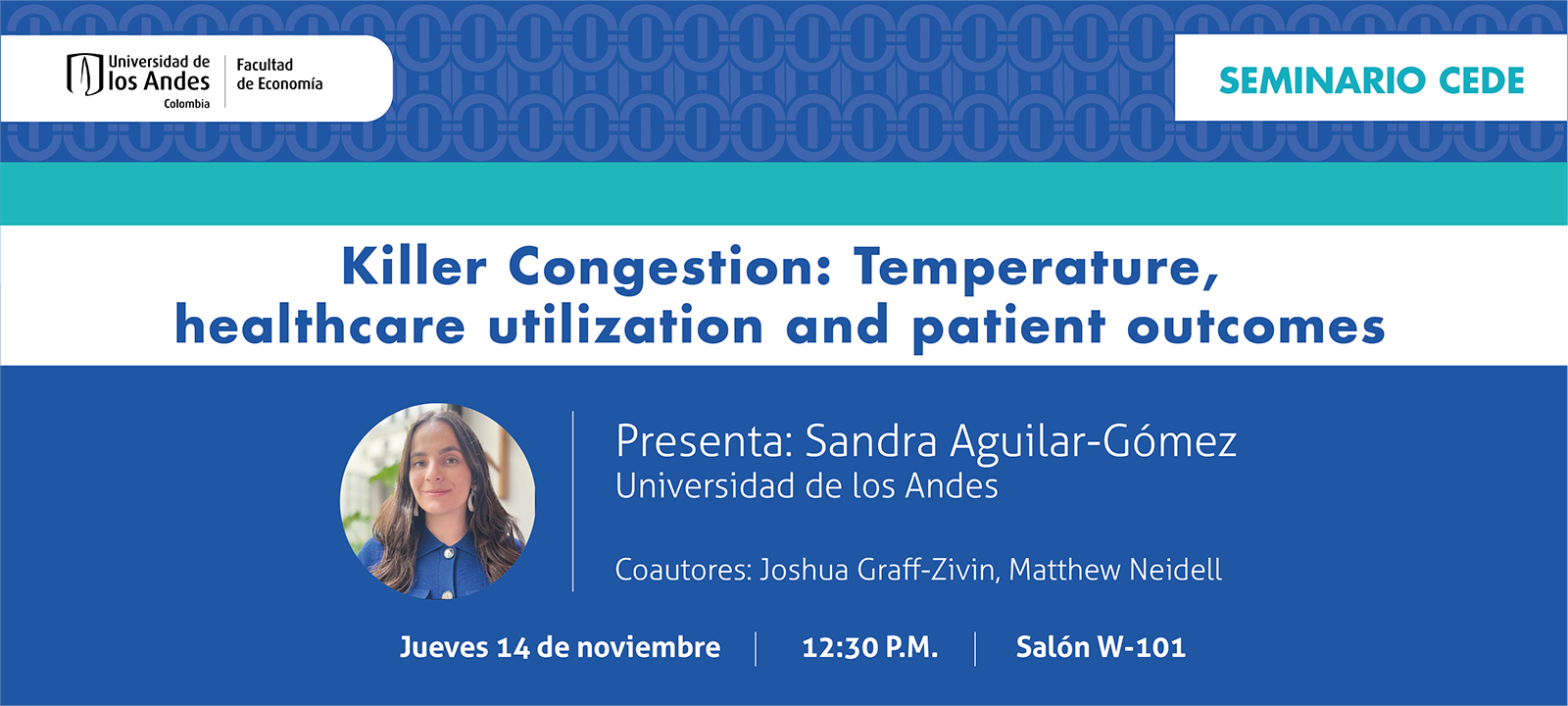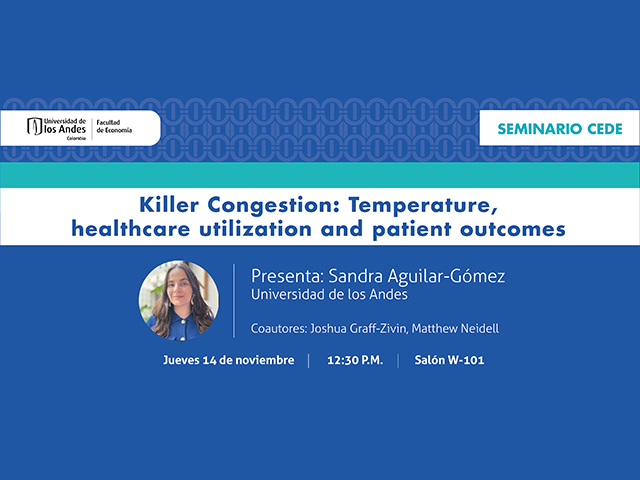Seminario CEDE - Sandra Aguilar-Gómez

Extreme heat deteriorates health, increasing morbidity and mortality. Its widespread impact can cause surges in healthcare demand, leading to hospital congestion. This paper offers the first analysis that separates the direct health effects of extreme heat from the indirect effects caused by hospital congestion. Using data from Mexico’s largest healthcare subsystem, we find that higher temperatures increase emergency department (ED) visits and hospital admissions. At daily maximum temperatures above 34°C, ED visits rise by 7.5 percent, and hospitalizations by 4 percent. Although more patients are admitted from EDs, the likelihood of individual admissions drops as temperatures rise, indicating a capacity constraint in healthcare. This trend results in more severe cases being sent home on hotter days. For admitted patients, we use three approaches to identify spillovers from crowding that worsen care quality: a) with no change in patient composition, a day exceeding 34°C results in a 5 percent rise in excess deaths, b) a temperature spike the day after admission increases excess mortality by 3 percent, and c) higher temperatures reduce the length of hospital stays. Consistent with declines in hospitalization rates and average stay lengths, death certificate data show an increase in the share of deaths occurring outside hospitals. This discovery also highlights a potentially important new avenue of climate adaptation. If hospital congestion contributes to the excess health damages from a changing climate, expanding labor and capital investments and better surge management tools can help reduce those damages.

